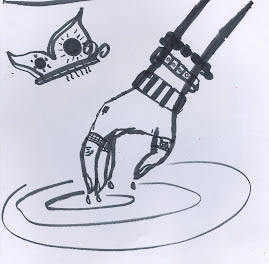As usual, the Ruraltown News was eager to plaster a negative article about the public schools on the front page this week. “Grade inflation” at
Most educators know that a standardized test gives evidence of what a student knows at a particular moment in time. While useful, the scores should not be given too much credence. Who knows what factors may be causing a particular student to score as he or she does? Maybe the student did not get enough sleep, breakfast, affection, or Mountain Dew. (Mountain Dew is the addictive elixir of life for high school students who are capable of smuggling a gallon jug of it into class under an armpit.) Maybe the student copied someone’s EOCT answers, and that person had a different version of the test. Believe me, any of these is possible.
Mr. Clark seems blissfully unaware of the variables that may affect standardized test results. He also apparently has no clue that the state mandated that the EOCT can only count as 15 percent of the student’s final grade. Now, I never taught math, but I am aware that 85 percent is, well, larger than 15 percent. The 85 percent is usually a cumulative average of the student’s grades from the 18 weeks of classroom attendance in a semester. The instructors from the State Department of Education who indoctrinated teachers in the art of “unpacking” the Georgia Standards for Language Arts placed great emphasis on the idea that a variety of assessments should be used to evaluate a student’s learning. There was a definite lack of emphasis on multiple-choice testing, such as the questions on the EOCT. Instead, the 85 percent block of the grade should come mainly from projects, presentations, written assignments, and research. The idea is that the student’s real understanding of the material is better evaluated by these assessments. (“Unpacking” suggests that the new standards are weighty or, perhaps, heavily loaded. Believe me, they are.)
No grade “inflation” occurred. Hopefully, assessments done during the 18 weeks of the class are a more accurate reflection of the student’s real understanding than a standardized test taken reluctantly during one spring morning. Mr. Clark doesn’t know some basic math: 85% >15%. Maybe some ego inflation occurred when a researcher was overeager to discover negative information about the public schools, and when a newspaper writer was eager to report negative information in a front-page story with cute little graphs. Maybe Mr. Clark should find another focus for













2 comments:
It never ceases to dismay me that public education is always so disparaged by the media. Apparently, teachers are as uneducated and lazy as parents when it comes to teaching our youth! The only difference is, teachers get blamed for what parents fail to do at home.
I think that too much emphasis is put on test scores - especially since the passage of "No Child Left Behind." I have seen very intelligent students do poorly in the PSSA tests.
Sweetie
Post a Comment